Monthly moon names offer a glimpse into North American cultural traditions and folklore.
Enlarge
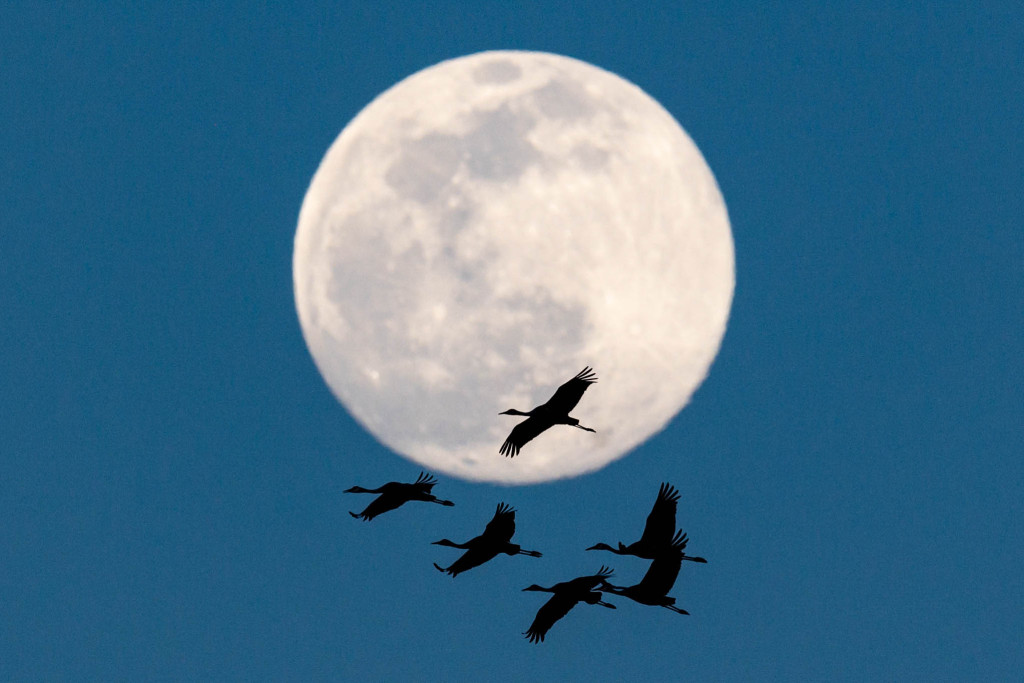
Photo by Eric Fowler, Nebraskaland Magazine
By Monica Macoubrie, Wildlife Education Specialist
The night sky has long been a source of wonder and inspiration, and the lunar cycles have long been observed and celebrated by cultures and civilization across the world. In North America, moon folklore and traditions surround monthly full moon names.
January – The Wolf Moon
January’s full moon is often dubbed the Wolf Moon. This name hearkens back to ancient Native American and European folklore, in which wolves were believed to howl more frequently during this time of the year, perhaps due to hunger or heightened activity during the winter months. The moon’s eerie glow on the wintry landscape highlights the harshness of the January wilderness.
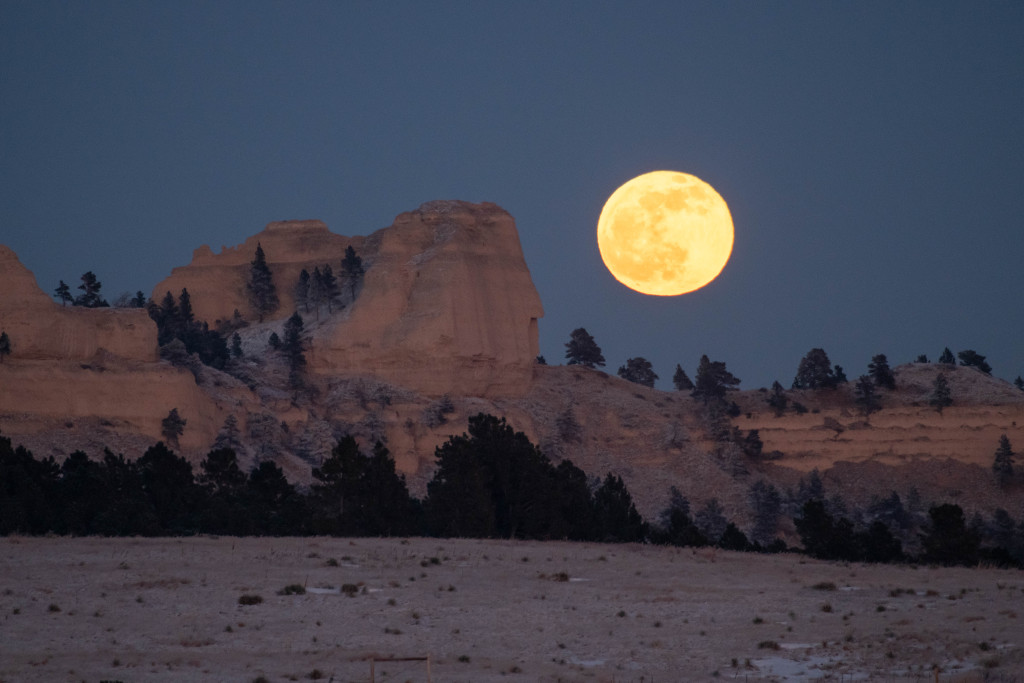
February – The Snow Moon
As winter’s grip tightens and snow blankets the land, February’s full moon is aptly named the Snow Moon, as known by various Indigenous peoples across North America. In some traditions, it’s also called the Hunger Moon, as food supplies may run low during this harsh month, intensifying the struggle for survival.
March – The Worm Moon
As temperatures begin to rise and the earth thaws, March’s full moon heralds the arrival of spring. Named the Worm Moon by Native American tribes, this designation refers to the emergence of earthworms from the thawing soil, signaling the onset of spring planting and the renewal of life. It’s a time of awakening and rejuvenation after the dormancy of winter.
April – The Pink Moon
Contrary to its name, April’s full moon doesn’t actually appear pink in color. Instead, the Pink Moon derives its name from the vibrant pink phlox flowers that bloom around this time of year in North America. This name is attributed to various Native American tribes, who marked the arrival of spring by the blooming of these pink-colored flowers, painting the landscape with hues of pink and purple.
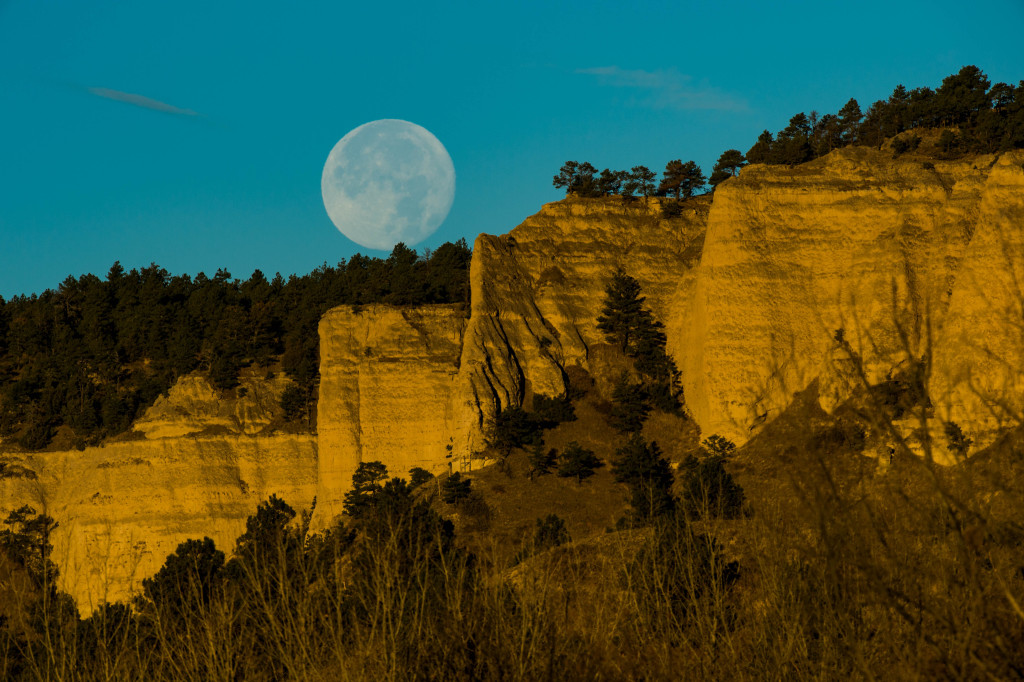
May – The Flower Moon
May’s full moon brings with it the beauty and fragrance of blooming flowers, earning it the moniker of the Flower Moon. As spring reaches its peak and flora bursts forth in a riot of colors, this name encapsulates the abundance and fertility of the season. It’s a time of celebration and growth, as nature flourishes in full splendor.
June – The Strawberry Moon
In June, as summer approaches, the luscious red berries of the strawberry plant ripen, marking the onset of the strawberry harvest season. Hence, June’s full moon is known as the Strawberry Moon, a name attributed to various Native American tribes who used it as a cue for gathering these delectable fruits. It’s a time of sweetness and abundance, as the earth yields its bounty.
July – The Buck Moon
As summer reaches its peak and the antlers of male deer begin to grow, July’s full moon is aptly named the Buck Moon. This designation originates from Native American tribes, who observed the growth of male deer antlers during this time of year. It symbolizes strength, virility and the cycle of life as nature reaches its apex.
August – The Sturgeon Moon
In August, as summer draws to a close, the waters teem with the abundance of sturgeon fish, making it an opportune time for fishing. Hence, August’s full moon is dubbed the Sturgeon Moon by various tribes, who relied on fishing for sustenance during this time of year. It’s a reminder of nature’s cyclical rhythms and the interconnectedness of all life.
September – The Harvest Moon
As the autumn equinox approaches, September’s full moon takes on special significance as the Harvest Moon. Named by European farmers who recognized the moon’s role in illuminating the fields, the Harvest Moon’s bright glow provided ample light for farmers to work into the night, ensuring a bountiful harvest. This moon symbolizes abundance, gratitude and the fruits of labor.
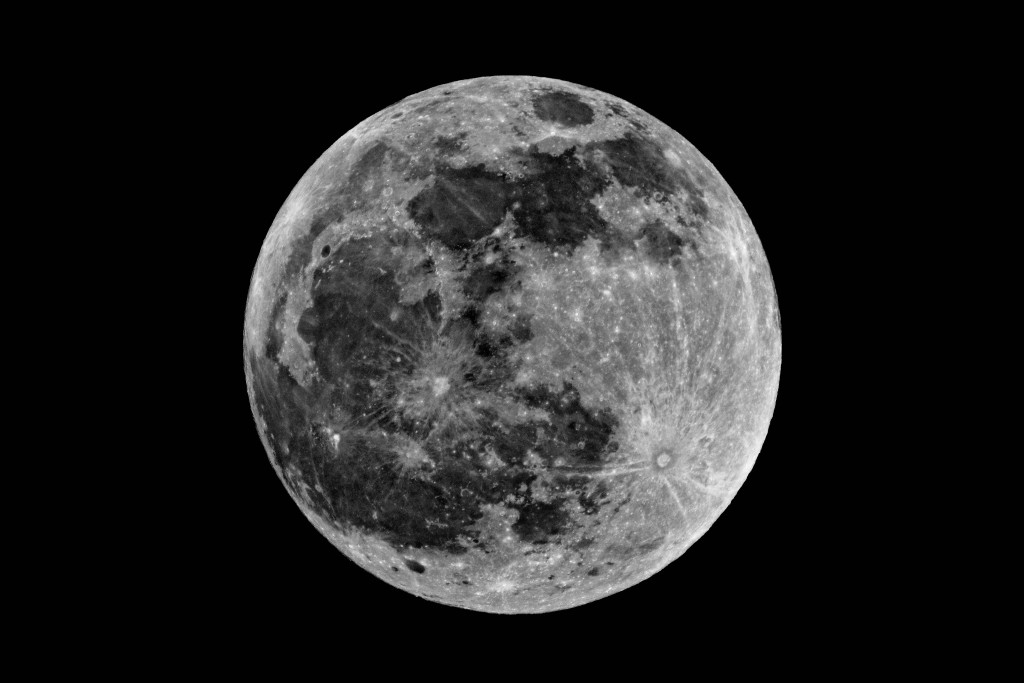
October – The Hunter’s Moon
In October, as the nights grow longer and colder, the Hunter’s Moon graces the sky, casting its silvery light upon the earth. Named by Indigenous peoples, this moon provided ample illumination for hunters to track prey and prepare for the coming winter months. It’s a time of preparation and survival, highlighting the primal instincts of hunting and gathering.
November – The Beaver Moon
As temperatures plummet and winter’s chill sets in, November’s full moon is named the Beaver Moon. This appellation originates from Indigenous tribes who recognized it as the time to set beaver traps before the waters froze over, ensuring a steady supply of fur for warmth and trade during the harsh winter months. The Beaver Moon symbolizes resourcefulness, preparation and adaptation to the changing seasons.
December – The Cold Moon
Rounding out the year, December’s full moon is fittingly dubbed the Cold Moon as temperatures plunge. This name underscores the harsh conditions of the winter season, with long nights and bitter cold prevailing. It’s a time of introspection, huddling close for warmth, and finding solace in the quiet stillness of the winter landscape.
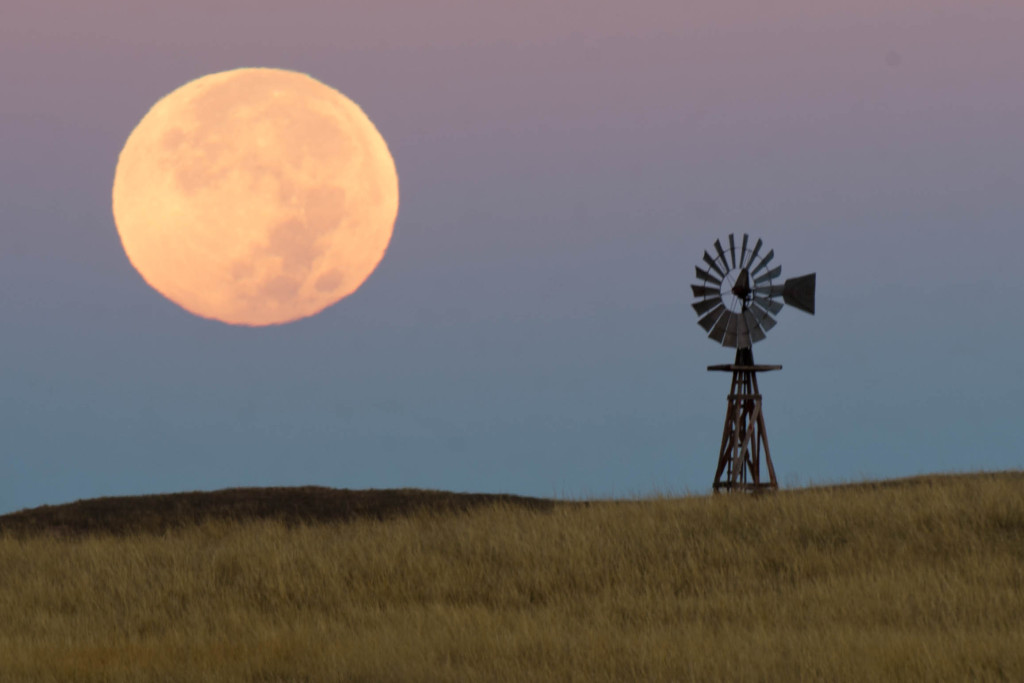
The monthly moon names offer a fascinating glimpse into the cultural traditions, folklore and natural rhythms that have shaped Native American and European-American views of the cosmos.
Each name reflects the unique characteristics and significance of its respective lunar cycle, serving as a reminder of the interconnectedness between the celestial realm and the terrestrial world. As we behold the radiant brilliance of the full moon, let us be awestruck by the enduring wisdom woven into these captivating names, which persist in evoking awe and respect in our hearts even now.
 Nebraskaland Magazine
Nebraskaland Magazine


